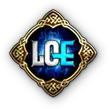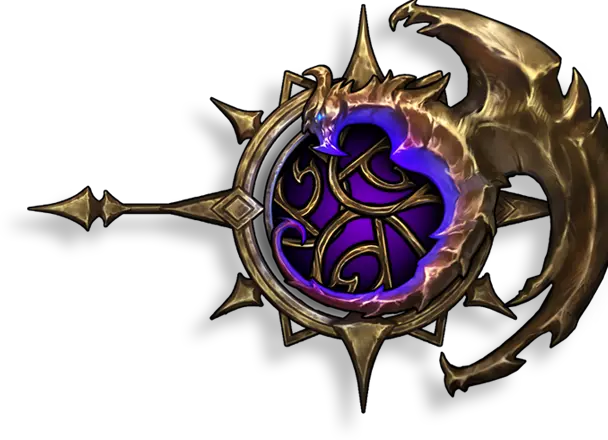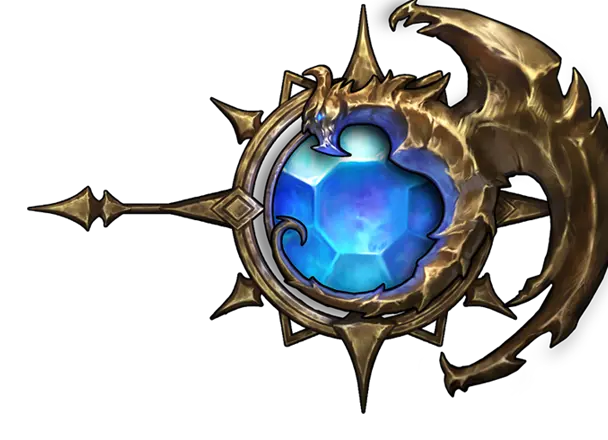Unleash Your Inner Strategist: Conquer the Online TCG Realm
Popular Digital TCG Games
In the vast landscape of online TCGs, a few games have stood out by capturing the hearts and minds of players worldwide. Let’s delve into some of the most popular digital trading card games today.
Hearthstone
Hearthstone is arguably the most famous game in the TCG genre. With more than 100 million registered players worldwide, this game has become a staple for both casual and competitive card game enthusiasts. Developed by Blizzard Entertainment, Hearthstone offers a rich lore based on the World of Warcraft universe, combined with strategic gameplay elements.
| Feature | Description |
|---|---|
| Developer | Blizzard Entertainment |
| Player Count | 100 million+ |
| Platforms | PC, Mac, iOS, Android |
| Release Year | 2014 |
Marvel Snap
Marvel Snap has quickly become one of the most profitable TCGs, thanks to its successful launch and the massive fanbase of the Marvel Universe (Plarium). The game offers fast-paced matches and a unique card collection system that keeps players engaged. It remains to be seen how it will fare against more established veterans in the long run.
| Feature | Description |
|---|---|
| Developer | Second Dinner Studios |
| Player Count | Growing rapidly |
| Platforms | PC, iOS, Android |
| Release Year | 2022 |
Pokémon Trading Card Game Online
The Pokémon Trading Card Game Online has been a beloved favorite for fans of the Pokémon franchise. The game saw a rerelease in 2023, with updates to support new hardware and features, much to the delight of its players (Plarium). This digital TCG allows players to collect, trade, and battle with their favorite Pokémon cards.
| Feature | Description |
|---|---|
| Developer | The Pokémon Company |
| Player Count | Millions |
| Platforms | PC, Mac, iOS, Android |
| Release Year | 2011 (Rereleased in 2023) |
These popular digital TCGs offer unique gameplay experiences and cater to various preferences within the strategic, creative, and competitive realms. Whether you’re a fan of the Warcraft universe, the Marvel heroes, or the Pokémon world, there’s a game for you in the ever-expanding world of online TCGs.
Emerging Digital TCG Games
New digital trading card games (TCGs) continue to emerge, offering fresh challenges and gameplay experiences for strategic, creative, and competitive players. Here, we explore three notable entries: Yu-Gi-Oh! Master Duel, Magic: The Gathering Arena, and Balatro.
Yu-Gi-Oh! Master Duel
Yu-Gi-Oh! Master Duel offers a more hardcore experience compared to its predecessor, Duel Links. This game includes all the traps, spells, and monsters that make the Yu-Gi-Oh! series famous, appealing to both long-time fans and new players seeking a complex and engaging card game experience.
| Feature | Detail |
|---|---|
| Game Modes | Single-player, Multiplayer |
| Platforms | PC, Console, Mobile |
| Complexity | High |
| Core Mechanics | Traps, Spells, Monsters |
Magic: The Gathering Arena
Magic: The Gathering Arena is one of the best digital versions of Magic to date. It offers many gameplay possibilities and formats of classic Magic, appealing to both veteran Magic players and CCG players seeking more challenge and complexity than games like Hearthstone (PCGamesN).
| Feature | Detail |
|---|---|
| Game Modes | Single-player, Multiplayer |
| Platforms | PC, Mac, Mobile |
| Complexity | High |
| Core Mechanics | Deck Building, Mana Management, Combat Strategies |
Balatro
Balatro is described as the Pac-Man of card games. Players must construct specific hands from their selection of cards to earn chips and multipliers. The game includes a cheat sheet for Poker novices and allows players to combine items to create card synergies for high scores.
| Feature | Detail |
|---|---|
| Game Modes | Single-player |
| Platforms | PC |
| Complexity | Medium |
| Core Mechanics | Hand Construction, Chip Earning, Multiplier Strategies |
These emerging digital TCGs offer unique gameplay experiences and varying levels of complexity, catering to different preferences and play styles within the TCG community.
Unique Gameplay Experiences
Exploring unique gameplay experiences within the world of online TCGs can be a thrilling journey. Two standout games, Zet Zillions and Wildfrost, offer distinctive mechanics and engaging narratives that set them apart from the crowd.
Zet Zillions
Zet Zillions is a deckbuilder game that merges elements of Slay the Spire, FTL, and Helldivers 2. This captivating game features a unique art direction inspired by ’80s cartoons and comic books. Players lead a crew on a mission to conquer the galaxy, utilizing a deck filled with trash, junk, and human resources.
Key Features:
- Art Direction: ’80s cartoons and comic books
- Gameplay Elements: Deckbuilding, resource management, and tactical combat
- Objective: Conquer the galaxy
| Feature | Description |
|---|---|
| Art Style | ’80s cartoons and comic books |
| Core Elements | Deckbuilding, resource management |
| Objective | Conquer the galaxy |
Wildfrost
Wildfrost is a deck-building roguelike game that combines elements of Hearthstone and Slay the Spire. Players embark on an adventure through a snowy landscape, rescuing creatures and finding treasures to build their deck. The game is known for its dynamic counter system, which adds a layer of strategic depth to the gameplay.
Key Features:
- Gameplay Elements: Deckbuilding, roguelike mechanics, and strategic combat
- Environment: Snowy landscape
- Unique System: Dynamic counter system
| Feature | Description |
|---|---|
| Core Elements | Deckbuilding, roguelike mechanics |
| Environment | Snowy landscape |
| Unique System | Dynamic counter system |
By exploring the unique gameplay experiences offered by Zet Zillions and Wildfrost, we can appreciate the innovative approaches that developers are taking within the online TCG realm. These games not only challenge our strategic thinking but also immerse us in richly detailed worlds that enhance the overall gaming experience.
Monetization in Digital TCGs
Monetization in the realm of digital trading card games (TCGs) presents a unique set of challenges and opportunities. Let’s explore the dynamics of trading and card value, as well as the inherent challenges of monetizing these digital platforms.
Trading and Card Value
In physical TCGs, trading cards have inherent monetary value. Players can buy, sell, and trade cards, making the collecting aspect of the game a potential source of livelihood. Booster packs, which contain cards with varying drop rates for mythics and rares, can yield significant returns on investment. The cards are seen as assets, contributing to a vibrant secondary market.
However, in digital TCGs like Hearthstone, the scenario is different. Players cannot trade cards, and the cards they purchase hold no monetary value. This lack of trading ability impacts the overall economy of the game and how players perceive the value of their digital collections. Players often find themselves spending significant amounts of money without the option of recouping any of their investment.
| Game | Card Trading Available | Monetary Value of Cards |
|---|---|---|
| Physical TCGs | Yes | Yes |
| Digital TCGs (e.g., Hearthstone) | No | No |
Challenges of Monetization
Monetizing digital TCGs poses several challenges. One primary issue is the inability to trade cards, which can make the game feel more like a financial sink than an investment. In games like Hearthstone, players may need to spend over $500 to collect an entire set (MassivelyOP). This significant cost can be a barrier for many players and may deter new players from joining.
Moreover, the success of game modes like Hearthstone’s Battlegrounds has complicated monetization efforts. Blizzard’s attempts to introduce a battle pass and other monetization methods faced backlash from the player community. This has led to the exploration of subscription models as a potential solution for generating revenue while maintaining player satisfaction (MassivelyOP).
| Challenge | Description |
|---|---|
| No Trading | Players cannot trade cards, reducing perceived value. |
| High Costs | Collecting sets can be expensive, often over $500. |
| Monetization Backlash | Attempts at new monetization methods have faced player resistance. |
By understanding these aspects of trading and the challenges of monetizing digital TCGs, we can better navigate the complexities of the online TCG landscape.
Strategies for Revenue Generation
Navigating the online TCG realm requires not only strategic gameplay but also innovative revenue generation strategies. Let’s delve into two primary methods: subscription models and alternative monetization methods.
Subscription Models
Subscription models offer a consistent revenue stream for developers while providing players with added value. For instance, Hearthstone, one of the most popular digital TCGs, has been exploring subscription models to enhance player retention and revenue (MassivelyOP). This model can help mitigate the high costs associated with acquiring complete card sets, which can exceed $500.
| Game | Average Cost for Full Set | Subscription Cost (Proposed) |
|---|---|---|
| Hearthstone | $500+ | $10/month |
| Magic: The Gathering Arena | $300+ | $15/month |
| Pokémon Trading Card Game Online | $200+ | $8/month |
Subscription models can include benefits such as:
- Monthly card packs
- Exclusive in-game content
- Access to premium events
- Ad-free experience
By subscribing, players gain predictable and continual access to new content, reducing the need for large, upfront expenditures.
Alternative Monetization Methods
Beyond subscriptions, developers are exploring various alternative monetization methods to cater to diverse player preferences. These methods can include:
Battle Passes: Periodic passes that offer rewards as players complete challenges. Despite some initial backlash in games like Hearthstone, battle passes remain a popular option.
Cosmetic Items: Selling non-essential, visual enhancements such as card backs, avatars, and themes. This method allows players to personalize their experience without affecting gameplay balance.
Microtransactions: Small purchases for individual card packs or specific cards. While this method is common, it can be controversial due to concerns about pay-to-win dynamics.
In-Game Advertising: Integrating ads into the game, either as interstitials between matches or as optional views for rewards.
| Monetization Method | Player Reception | Revenue Potential |
|---|---|---|
| Battle Passes | Mixed | High |
| Cosmetic Items | Positive | Medium |
| Microtransactions | Controversial | High |
| In-Game Advertising | Mixed | Medium |
In summary, by leveraging subscription models and exploring alternative monetization methods, online TCG developers can create a balanced and sustainable revenue stream while maintaining player satisfaction and engagement.
Legends of Elysium (LOE) redefines FREE-to-play strategy by fusing collectible cards with deep board game elements. Conquer a vibrant fantasy universe with unique races, customizable heroes, and endless strategic paths.
Brought to you by DA Games, LOE offers:
- Beautiful visuals that bring Elysium to life ✨
- Competitive multiplayer leagues for skill testing ⚔️
- Engaging battlefield challenges and eSports tournaments
- Play-and-earn mechanics to turn your passion into profit
Become a legend today!
[CTA_BUTTON_PLAY]







